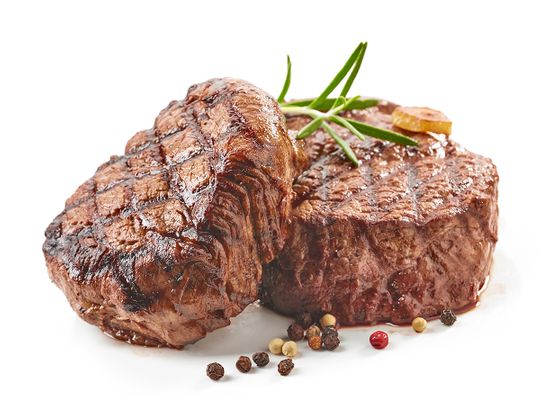
Latest research published in the Annals of Internal Medicine (AIM) that said adults should continue to enjoy their current consumption levels of red and processed meats has set off a media and scientific frenzy. That’s not surprising — the conclusion runs contrary to most nutrition guidelines, which link red meat consumption to heart disease, cancer and Type 2 diabetes.
But while experts continue to battle it out over nutritional science, my worry as a dietitian is that consumers will believe they can eat as much red meat as they want and that it will never affect their health. When you look closely at the studies, that’s not the right conclusion to make.
Before I dive in, I want to address the issue of bias, because I’ve been accused of being both a shill for the beef industry (I’m not) and a vegan advocate (I’m not that, either). I personally don’t eat meat because I don’t enjoy it, but I also don’t rail against people who eat meat.
Critics also point out that one of the study was specifically about consumers’ values and preferences regarding meat consumption and that the final recommendation gave too much weight to the fact that consumers enjoy meat and don’t want to give it up
I base my professional opinions and recommendations on the strongest science that exists. Unfortunately, that can be difficult, because nutritional science is often weak.
Final recommendation
AIM studies showed that reducing meat intake is associated with very small decreases in developing certain cancers, as well as small decreases in dying from heart disease and Type 2 diabetes. So you’d think the final recommendation would be to reduce red meat intake; after all, small decreases are better than no decreases, right?
It wasn’t, however. The final recommendation was that adults should continue their current consumption of unprocessed and processed red meat.
Evidence linking meat to different chronic diseases was graded by the AIM panel of researchers as “weak recommendations based on low-certainty evidence” because much of it was observational (which means it shows correlations, rather than cause and effect). So the researchers decided consumers may as well just eat meat.
John Sievenpiper, a researcher at the University of Toronto who worked on the AIM paper about meat, cancer and heart disease, said, “I completely oppose this final recommendation and worry about the lasting damage to public and planetary health.”
Critics also point out that one of the study was specifically about consumers’ values and preferences regarding meat consumption and that the final recommendation gave too much weight to the fact that consumers enjoy meat and don’t want to give it up. These critics, many of whom are proponents of plant-based diets, have asked the journal to retract the studies. To date, the journal has not taken this step.
How much meat?
Some experts also question whether the beef industry influenced or financed these studies. I asked the lead author of the clinical guideline, Bradley Johnston, and he maintains that the research was unfunded. But my job is not to trace the funding; it’s to help readers figure out how much meat is a safe amount to eat.
To consumers, the advice to continue to eat their “current” levels of meat can be confusing.
I asked Johnston whether there is enough science to make a recommendation for how much meat is the right amount to eat, and he said “no.” There’s no gold standard study that can truly answer this question.
So where does that leave you when you’re planning your menu? Here’s the thing: Nutrition research is difficult to conduct, so we all must live with some uncertainty about exactly what to eat.
The weight of the evidence (although admittedly imperfect) still supports eating patterns like the Dietary Approaches to Stop Hypertension (DASH) and Mediterranean diets, which recommend cutting back on ultra-processed foods and including lots of plant-based foods (vegetables, fruit, nuts, beans), plus fish, chicken and the option of small amounts of red meat.
Studies link these dietary patterns to a reduced risk of hypertension, heart disease, Type 2 diabetes, dementia and certain cancers. Of course, even some of these studies have been criticised for their methodology, bias or funding sources. Nutritional science is imperfect, but the magnitude of these studies is the best direction we have right now.

The DASH and Mediterranean diets don’t suggest specific amounts of red meat but emphasise a whole dietary pattern, which is more important than any one food. DASH recommends no more than 6 ounces of protein-rich foods per day, which can include fish, chicken or meat, and it specifically recommends reducing meat and increasing vegetables, whole grains and beans.
The Mediterranean diet suggests having meat “infrequently” or “less often,” which is often interpreted as once a week or a few times a month.
Interestingly, some of the most well known and well respected studies supporting the DASH, Mediterranean and other plant-based diets were left out of the AIM analyses, because they didn’t fit the criteria of being specifically about meat consumption. Omitting these key pieces of research is one of the points that critics attacked and may have contributed to the final flawed recommendation.
Given the problems with the latest study, I stand by my long-held belief that a varied diet with lots of whole, plant-based foods, less ultra-processed foods and — yes — small amounts of red meat is your best bet for reducing your risk of disease.
Cara Rosenbloom, an acclaimed dietitian, is president of Words to Eat By, a nutrition communications firm specialising in nutrition education
Washington Post










